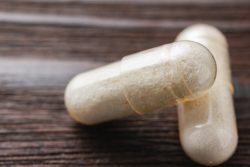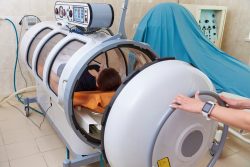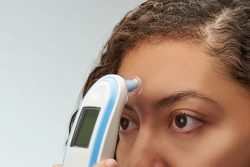 Living a healthier and longer life is inherently linked with delaying or preventing the onset of aging. The aging process has far reaching effects on a variety of systems within the body even at the molecular and cellular levels. Sauna use which is also referred to as “sauna bathing” is an ancient practice that shows profound implications for slowing aging.
Living a healthier and longer life is inherently linked with delaying or preventing the onset of aging. The aging process has far reaching effects on a variety of systems within the body even at the molecular and cellular levels. Sauna use which is also referred to as “sauna bathing” is an ancient practice that shows profound implications for slowing aging.
Sauna bathing exposes the body to extreme heat which is a form of stress. The effects of this heat stress on longevity has been shown in worms and flies, increasing their lifespans by as much as 15%. Furthermore, large observational studies conducted in humans have identified strong links between a lower risk of age-related conditions and sauna use.
Participants in the Kuopio Ischemic Heart Disease Risk Factor Study (KIHD) which is an ongoing prospective population based cohort study of health outcomes in over 2,300 middle-aged men from eastern Finland who used saunas two to three times per week, were 27% less likely to die from a variety of age-related disorders.
The studies findings also showed that the benefits received were dose-dependent in that men who engaged in sauna bathing roughly twice as often, about 4 to 7 times per week, were 50% less likely to die from cardiovascular-related causes.
The KIHD study also revealed that frequent sauna bathing reduced the risk of developing age-related cognitive decline disorders in a dose-dependent manner. Men who used a sauna two to three times per week had a 66% lower risk of developing dementia and a 65% lower risk of developing Alzheimer’s Disease.
The findings also showed that frequent sauna bathing users were 40% less likely to die from all causes of premature death. And these findings remained true even when considering activity levels, age, and lifestyle factors that may have influenced the men’s health.
Sauna bathing exposes the body to extreme heat which elicits a robust and rapid response:
-Skin and core body temperatures will increase markedly and sweating begins
-Cardiac output which is a measure of the amount of work the heart performs in response to the body’s need for oxygen, increases by 60% to 70% and the heart rate also increases
-Blood flow is redirected from the body’s core to the skin to facilitate sweating.
-Plasma volume increases to compensate for the decrease in core blood volume, provides a reserve source of fluid for sweating and prevents rapid increases in core body temperature which promotes hyper-thermic conditioning which is a form of heat tolerance.
-During moderate temperature sauna bathing, the heart rate may increase up to 100 beats per minute and up to 150 beats per minute when the heat is turned up
These are just some of the visible signs of heat stress. Invisible responses to heat stress will occur at the molecular and cellular levels from a physiological phenomenon known as hormesis. Hormesis is a response that is defensive and that will occur after exposure to a mild stressor. This is a trigger to a vast array of protective responses to the body that repair cell damage, elicit long term adaptations, and provides protection from consistent exposures to more harmful stressors.
The WHO estimates that almost 18 million people die every year from cardiovascular diseases and is one-third of all deaths globally. People who engage in long term sauna bathing usually experience improvements in several kinds of cardiovascular health such as reduced blood pressure, improved left ventricular function, improved endothelial function, and reduced markers of inflammation.
Different forms of heat therapy including sauna use have been proposed as changes to exercise for people who are not able to exert physical activity due to physical limitations or chronic disease.
The brain is primarily vulnerable to the effects of aging. Heat-induced responses will help protect the brain from the cumulative effects of unhealthy dietary patterns, oxidative stress and daily energy metabolism which all detour long term cognitive function.
Research has also identified an amount of heat stress promoted molecular mechanisms that modulate cognitive decline and aging such as those that mitigate protein damage and aggregation or activate endogenous antioxidant repair, and degradation processes.
A growing body of evidence from clinical, observational, and mechanistic studies all suggest that sauna bathing is associated with a variety of health benefits and may offer a way to forestall the effects of aging. For maximum benefits, healthy adults should follow the following guidelines for safe and effective sauna bathing:
-4 to 7 sessions per week
-Approximately 20 minutes per session
-Temperature is dependent upon the type of sauna. Far infrared saunas are typically used at 130 – 135 degrees
To view the original scientific study click below
Benefits and risks of sauna bathing.
 A recent study led by Dana King, a professor and chair of the Department of Family Medicine, along with research partner Jun Xiang, have found that glucosamine supplements may reduce overall mortality almost as well as regular exercise does. The new epidemiological study has provided encouraging results that are good indicators supporting their analysis.
A recent study led by Dana King, a professor and chair of the Department of Family Medicine, along with research partner Jun Xiang, have found that glucosamine supplements may reduce overall mortality almost as well as regular exercise does. The new epidemiological study has provided encouraging results that are good indicators supporting their analysis.


 The World Health Organization (WHO) recommends exceeding weekly recommended physical activity levels to offset the health harms that are associated with prolonged sitting. This is the 1st recommendation of this kind following additional research showing that an increase in physical activity can reduce the risk of early death which has been linked to being sedentary for a long period of time.
The World Health Organization (WHO) recommends exceeding weekly recommended physical activity levels to offset the health harms that are associated with prolonged sitting. This is the 1st recommendation of this kind following additional research showing that an increase in physical activity can reduce the risk of early death which has been linked to being sedentary for a long period of time. A new study has reported a clear association between low cardio-respiratory fitness and muscle strength and the risks of developing symptoms of anxiety, depression or both. The study which included over 150,000 participants, may help with clinical guidance on physical fitness and mental health.
A new study has reported a clear association between low cardio-respiratory fitness and muscle strength and the risks of developing symptoms of anxiety, depression or both. The study which included over 150,000 participants, may help with clinical guidance on physical fitness and mental health. A new study conducted by a research team at MedUni Vienna’s Division of Endocrinology and Metabolism, has shown that cold ambient temperatures increase levels of Vitamin A in both mice and humans. This can help convert bad white adipose tissue into good brown adipose tissue which can then in turn stimulate heat generation and fat burning. Vitamin A is important for a variety of human processes – vision, cell growth, reproduction and the immune system.
A new study conducted by a research team at MedUni Vienna’s Division of Endocrinology and Metabolism, has shown that cold ambient temperatures increase levels of Vitamin A in both mice and humans. This can help convert bad white adipose tissue into good brown adipose tissue which can then in turn stimulate heat generation and fat burning. Vitamin A is important for a variety of human processes – vision, cell growth, reproduction and the immune system.  Living a healthier and longer life is inherently linked with delaying or preventing the onset of aging. The aging process has far reaching effects on a variety of systems within the body even at the molecular and cellular levels. Sauna use which is also referred to as “sauna bathing” is an ancient practice that shows profound implications for slowing aging.
Living a healthier and longer life is inherently linked with delaying or preventing the onset of aging. The aging process has far reaching effects on a variety of systems within the body even at the molecular and cellular levels. Sauna use which is also referred to as “sauna bathing” is an ancient practice that shows profound implications for slowing aging. A new study from the Univeristy at Tel Aviv and the Shamir Medical Center in Israel indicates that hyperbaric oxygen treatments (HBOT) in adults that are healthy can stop blood cell aging and also partially reverse the process of aging. From a biologic sense, the blood cells appeared to get younger as treatments progressed.
A new study from the Univeristy at Tel Aviv and the Shamir Medical Center in Israel indicates that hyperbaric oxygen treatments (HBOT) in adults that are healthy can stop blood cell aging and also partially reverse the process of aging. From a biologic sense, the blood cells appeared to get younger as treatments progressed. A new study has revealed that people who exercise in the morning between 8:00 a.m. and 10:00 a.m. as opposed to later in the day may be less likely to develop certain types of cancer. This new research may help future research into the timing of exercising as a possible way to reduce the risk of cancer.
A new study has revealed that people who exercise in the morning between 8:00 a.m. and 10:00 a.m. as opposed to later in the day may be less likely to develop certain types of cancer. This new research may help future research into the timing of exercising as a possible way to reduce the risk of cancer. New research has shown that by wearing blue-light glasses right before sleeping a person can get a better night’s sleep and also contribute to better workday productivity. This is especially important since people are learning and working from home as well as binge watching TV more than ever before due to the pandemic.
New research has shown that by wearing blue-light glasses right before sleeping a person can get a better night’s sleep and also contribute to better workday productivity. This is especially important since people are learning and working from home as well as binge watching TV more than ever before due to the pandemic. Almost two centuries ago the current “normal” body temperature in humans was established at 98.6 degrees Fahrenheit and has been used as the measure for assessing fevers. However, over time lowering of body temperature has been widely substantiated in healthy adults.
Almost two centuries ago the current “normal” body temperature in humans was established at 98.6 degrees Fahrenheit and has been used as the measure for assessing fevers. However, over time lowering of body temperature has been widely substantiated in healthy adults.  A new study has shown that people who are cheerful and feel enthusiastic or what is known as the “positive effect”, are not likely to experience decline in memory with aging. This study adds to a increasing body of research that shows the role a positive outlook has on aging.
A new study has shown that people who are cheerful and feel enthusiastic or what is known as the “positive effect”, are not likely to experience decline in memory with aging. This study adds to a increasing body of research that shows the role a positive outlook has on aging.